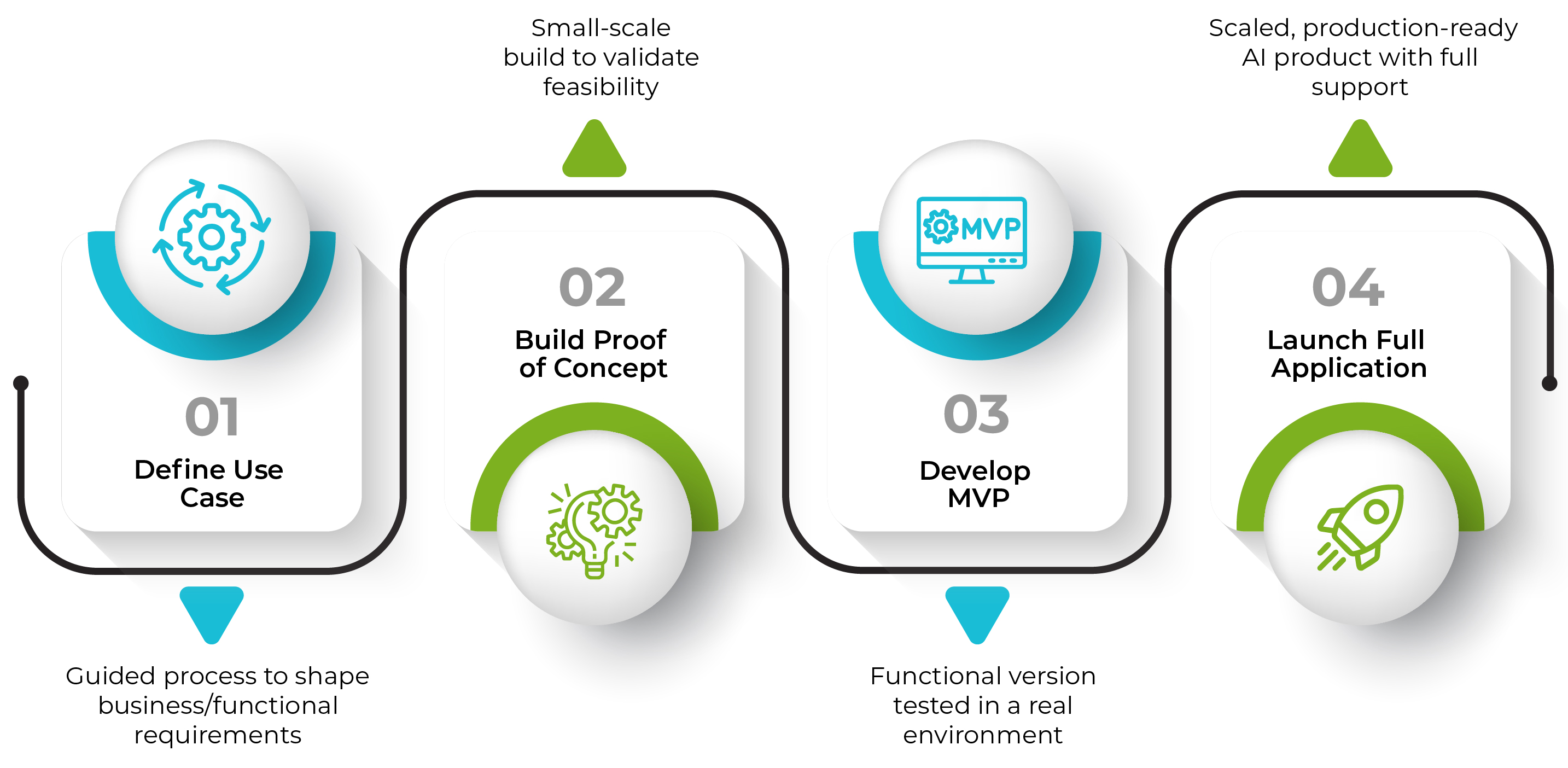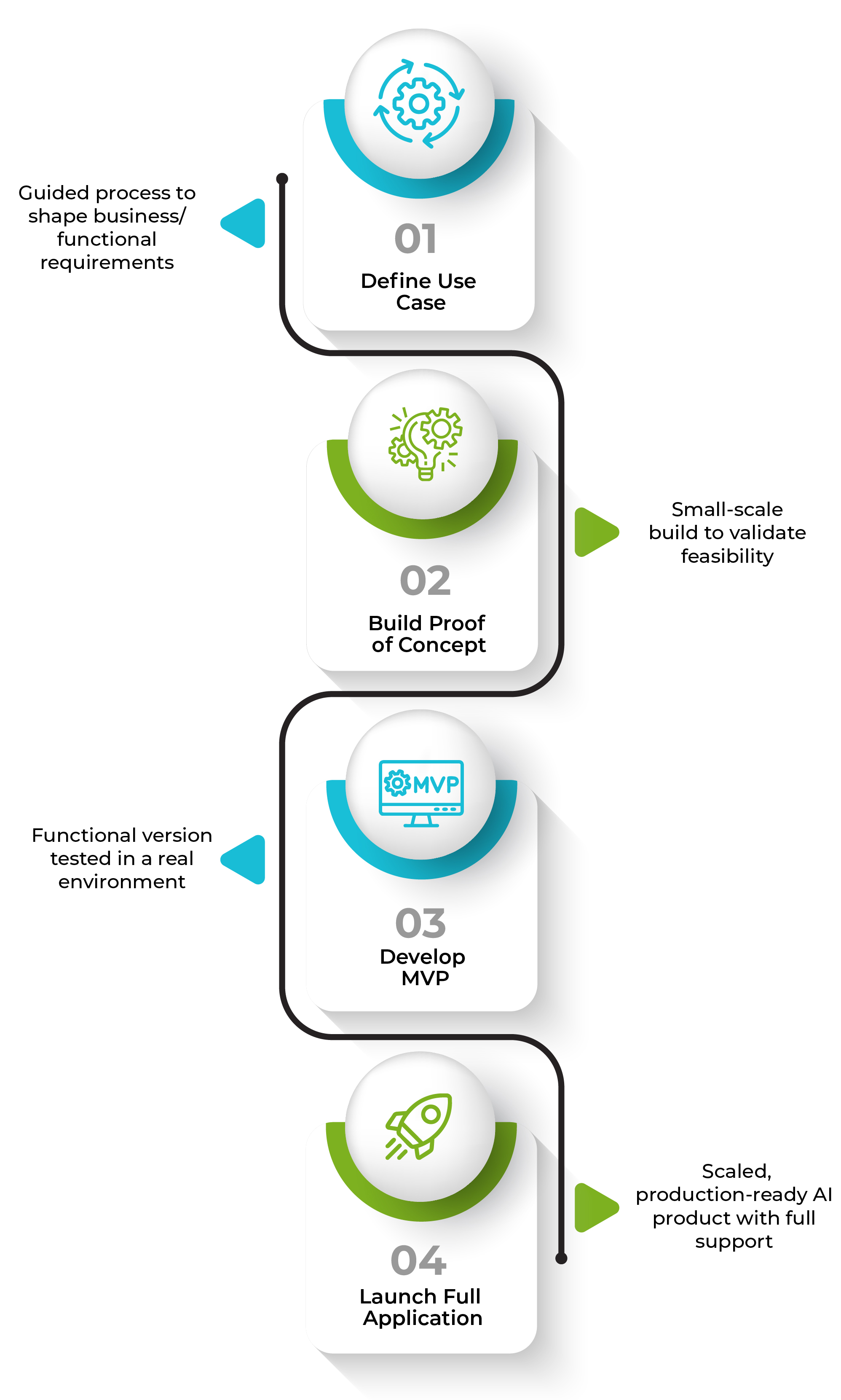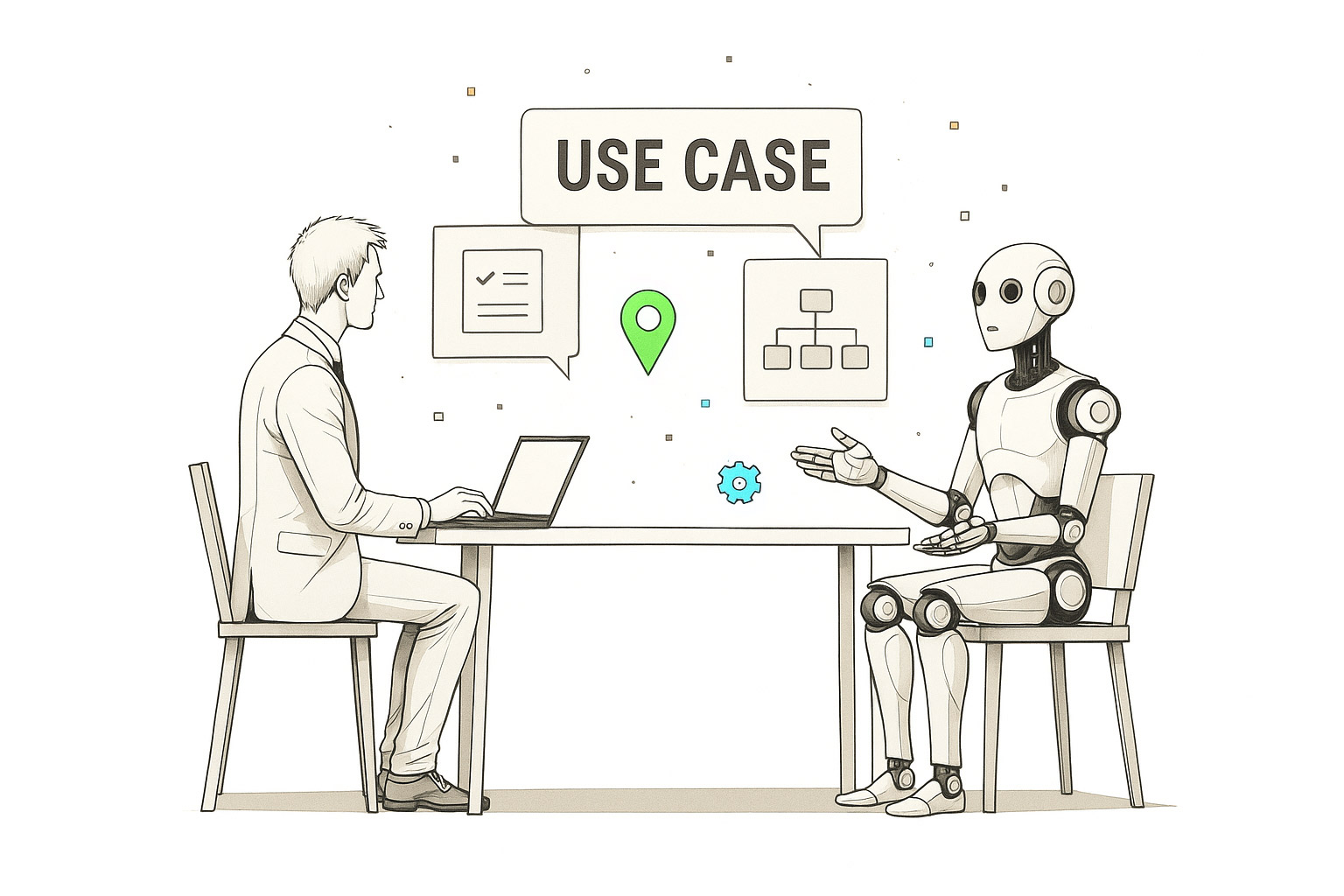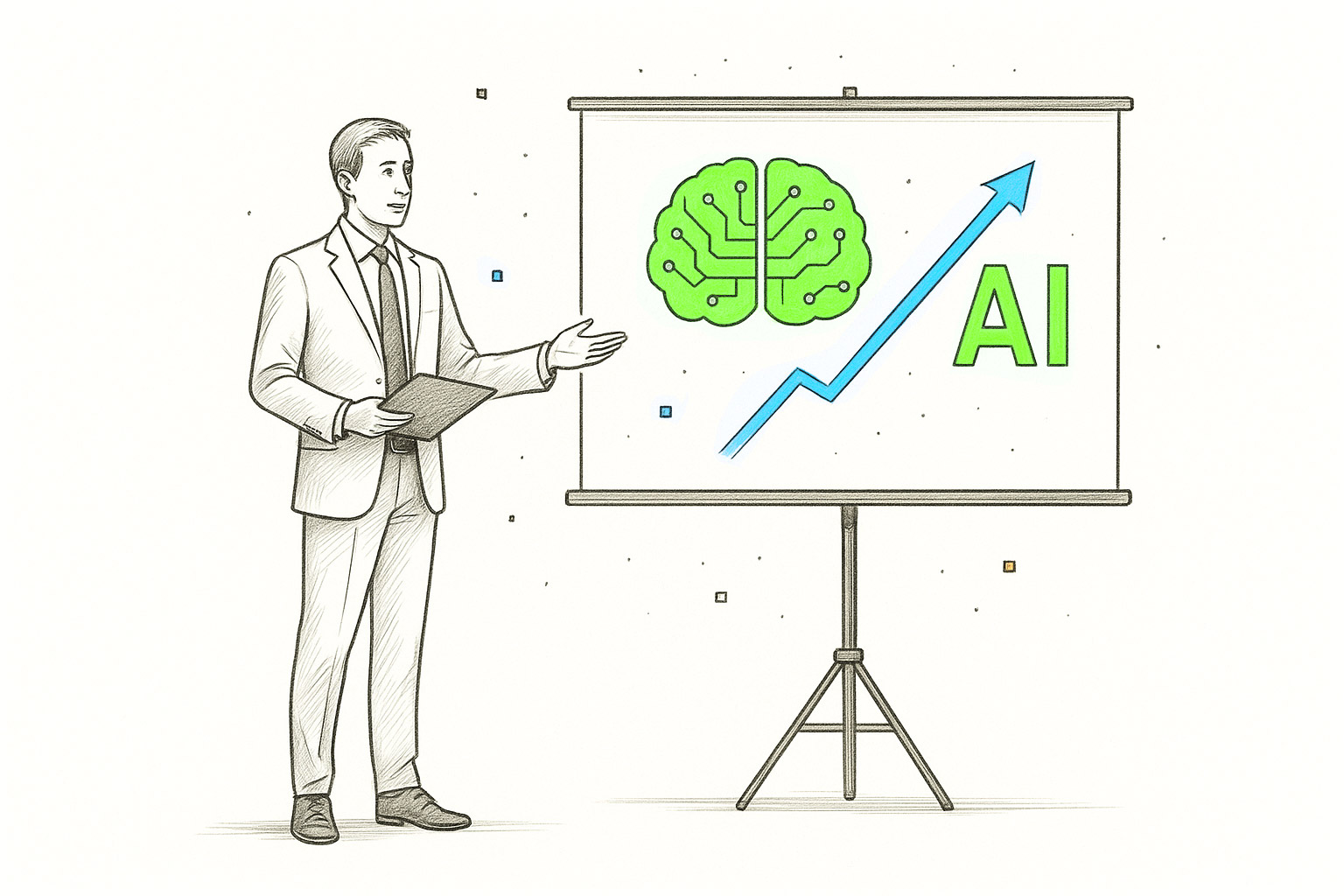AI Product Development WorkflowFrom Idea to Live AI Solution
We help clients go from early use case definition to fully deployed AI solutions. You bring the problem, idea, or use case. We help shape, plan, and build the solution.
HOW THE PROCESS WORKS
End-to-End Support from Idea to AI Product
Building a useful AI product takes structured thinking, realistic planning, and a team that understands both business value and software delivery in the AI era. And Ekipa.ai offers just that - covering everything from AI MVP development to full-scale implementation.
From Idea to AIOur Process



Step 1
Use Case Definition & Requirements


Step 1
Use Case Definition & Requirements
Before writing any code, we (along with our AI Requirements Analyst) help you define the problem clearly. That means turning your idea or use case into a concrete, workable plan. We identify the real business need, explore how AI can help, and translate that into clear business and functional requirements.

Step 2
Proof of Concept (PoC)


Step 2
Proof of Concept (PoC)
This is the first real build. A PoC tests whether the idea is technically feasible and fits into your workflows. It's focused, small in scope, and built to quickly validate key assumptions using real data and basic infrastructure. In many cases, it also shows early ROI and outcomes that help you gain stakeholder support.

Step 3
Minimum Viable Product (MVP)


Step 3
Minimum Viable Product (MVP)
If the PoC is successful, we move to a Minimum Viable Product. This version includes a working UI, basic integrations, and enough robustness to be tested in a real-world setting. It's where we move from prototype to something your team can actually use.

Step 4
Full-Scale AI Solution


Step 4
Full-Scale AI Solution
Once the MVP proves its value, we help you turn it into a production-grade system. That includes improving performance, building proper pipelines (data ingestion, retraining, monitoring), integrating with your existing systems, and ensuring everything runs reliably at scale.
Got an AI product idea?
Our experts can help you shape, build, and launch it end to end.